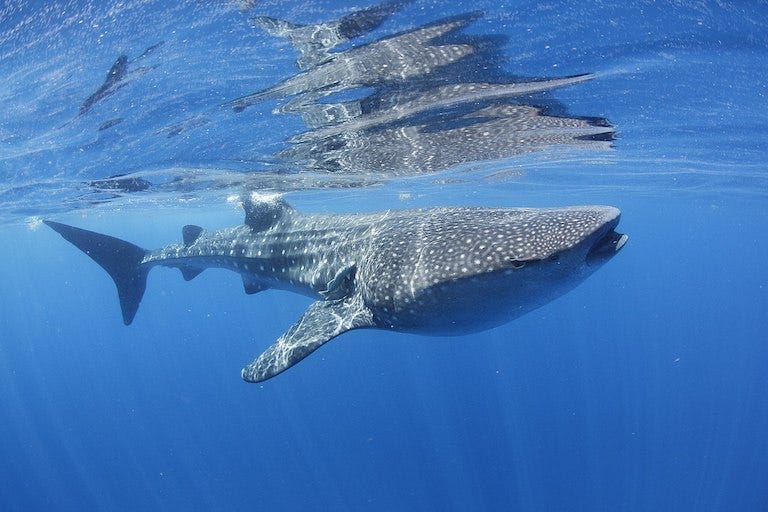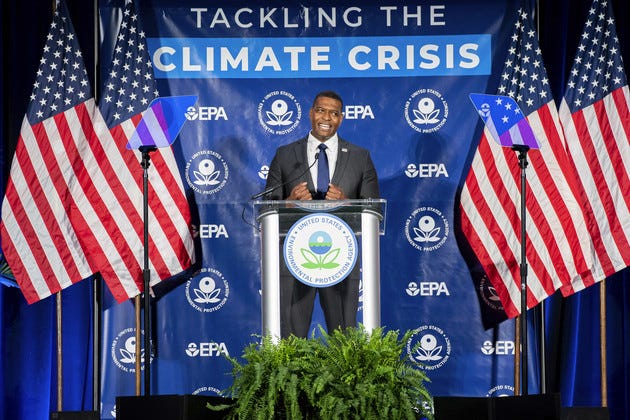The Weekly Anthropocene, May 17 2023
Seabird restoration worldwide, epic new emissions regulations in America, an audacious bet on nuclear fusion, and more!
Seabirds
Global seabird populations declined by an estimated 70% between 1950 and 2010 (likely on top of much bigger declines before that), due to an array of human-caused threats ranging from invasive species eating eggs on vulnerable island nesting grounds to bycatch deaths in industrial fisheries. Now, a new study surveys a global seabird comeback. The researchers found that across 851 active seabird restoration projects covering 138 species across 36 countries, a wide majority were highly effective. 76% of the projects successfully achieved a breeding population of seabirds, on average within two years of implementation!
Notably, the new paper is coauthored by renowned ornithologist Dr. Stephen Kress, who started and led an archetypal example of a successful seabird comeback program: a fifty-year reintroduction and restoration of Maine’s Atlantic puffin population. Beginning with a few chicks in 1973, Dr. Kress shepherded puffins in Maine to over 750 breeding pairs today, pioneering innovative tactics now widely used in the seabird restoration field along the way. For example, Dr. Kress found that the chicks he raised in Maine weren’t coming back to their islets of origin to breed as puffins normally did, but was able to fix this by adding wooden model puffins, likely encouraging the now-adult puffins to see it as an already-successful colony and a good place to raise a family.
Seabirds are a vital component of the oceanic carbon cycle, global carbon sequestration, and marine ecosystems’ response to climate change. Their guano fertilizes phytoplankton, boosting the entire food web and increasing fish stocks. It also provides key nutrients to coral reefs, helping them recover from heatwave-induced bleaching. Seabird restoration is a great tactic to help solve the climate and biodiversity crises!
United States
As long expected, on May 11, 2023 Biden’s Environmental Protection Agency formally released planned new EPA limits on greenhouse gas emissions from fossil fuel power plants!
In broad strokes, the new regulations require coal plants in America to cut their CO2 emissions by 90% by 2030 (except those planning to retire imminently) and natural gas plants to cut their CO2 emissions by 90% by 2035 or switch to burning mostly hydrogen by 2038 (although the specific requirements are more complicated than that). In practice, emissions reduction at this level is so difficult (and would rely on carbon capture, see below) that these regulations will effectively just make the retirement of coal plants and the switch to renewables happen even faster!
And there are public health as well as well as climate benefits. The EPA estimates that in the single year of 2030 alone, these regulations will avoid 1,300 premature deaths and 300,000 asthma attacks, as vast amounts of PM 2.5, sulfur dioxide, and nitrogen oxide emissions will be avoided as coal plant retirements accelerate.
There’s also a really interesting aspect to how these regulations were put together, with an eye on avoiding the Obama-era Clean Power Plan regulations’ fate of being shut down by the Supreme Court. The legal basis for these new regulations are relies on the Inflation Reduction Act’s tax credits for carbon capture (adding still-in-development tech to smokestacks to capture carbon dioxide emissions), in a fascinating reversal of carbon capture’s usual role as an “excuse” for fossil fuel giants to slow decarbonization. The IRA financially supporting carbon capture makes it possible to legally argue that massive emissions cuts are now technologically feasible for fossil fuel plants to achieve and yet continue operating. However, carbon capture technology has a long and storied history of being highly expensive to install and then not working, so in practice most energy providers will likely choose to just speed up their switch to tried-and-true renewable energy. (And if someone manages to get carbon capture working well after all, that’ll reduce emissions as well).
Even if the new rules don’t survive a Republican Supreme Court (very possible), their mere existence and the possibility of future Democratic presidencies reinstituting them will likely incentivize utilities to switch to renewables much faster. This is an excellent and highly innovative policy that will likely greatly accelerate US decarbonization! Spectacular news.
“It’s about uniting as a society, as a nation, as a people, for the greater good of humanity…This is about seizing the moment and understanding that we have an obligation to not only leave behind a healthier planet for generations that will come after us but to leave behind a fairer and more just society.”
-EPA Administrator Michael Regan
Nuclear Fusion
Microsoft just made an extremely surprising bet that nuclear fusion will be ready to commercially generate electricity by the late 2020s, decades ahead of most other projections. The software giant signed an agreement with fusion startup Helion Energy (financial details still not public) in which Helion commits to providing Microsoft with 50 megawatts of clean energy from nuclear fusion to Microsoft facilities in Washington State in 2028. This is the first ever commercial agreement for nuclear fusion energy-which, to be clear, has never been created at anything like a commercial scale yet. By the standards of fusion’s history of decades-long incremental improvements at the lab scale, the Microsoft-Helion deal’s expected full commercialization in five years would represent an incredibly fast advance.
Some background: nuclear fusion, the same energy source that powers the Sun, works by smashing atoms together to release energy, as opposed to splitting atoms like the already-in-use nuclear fusion. It could produce vast amounts of clean, no-emissions power, but companies and labs are still working on consistently and economically achieving the immense star-level temperatures (in the hundreds of millions of degrees Celsius) necessary to make it happen.
Helion claims that their seventh-generation Polaris plasma accelerator (a prototype is pictured above) will successfully generate electricity in 2024, which would be a huge and unprecedented success if it occurs. This deal may well be remembered as a wildly overconfident failed prediction. Many experts publicly doubt that Helion can pull this off. But if it goes well, there could be a history-making new source of zero-carbon energy joining the grid sooner rather than later!
Sweden
As EVs boom around the world, new statistics from Sweden show that contrary to popular belief, electric cars are less likely to catch fire than gas cars. The Swedish Civil Contingencies Agency reports that in 2022, approximately 0.004% of all electric or plug-in hybrid cars in Sweden caught (equivalent to 4 out of every 100,000 cars), while approximately 0.08% of entirely gas-powered cars in Sweden caught fire (80 out of 100,000). Sweden has over 600,000 electric cars and even more gas-powered cars, so this is a robust sample size of EV safety in real-world conditions. Gas powered cars are more than 18 times more likely to catch fire than electric cars.
Kyrgyzstan
A remote region of the Central Asian republic of Kyrgyzstan is becoming a stronghold for snow leopards. In the Shamshy Nature Reserve, two conservation NGOs are helping locals diversify from livestock herding into beekeeping, fruit growing, tourism, and other pursuits. (Some are even discussing using part of the resulting money to build an artificial glacier to guard against water shortages, a technique already working in Ladakh). Less dependence on herding helps snow leopards, as climate change exacerbates conflict between herders’ livestock and big cats, with both straying into each other’s territory to find food amidst unpredictable weather.
Camera trap surveys now indicate that local populations of snow leopards and their ibex prey are stable or increasing. Another great example of community-based conservation in the Anthropocene!
Ecuador

Ecuador just concluded the largest debt-for-nature deal in history. With support from the U.S. International Development Finance Corporation, the Inter-American Development Bank, and Credit Suisse, Ecuador was able to convert a $1.6 billion in debt to a new $656 million loan, on the condition that Ecuador spends about $323 million over the next 18 years on conservation work in the Galápagos Marine Reserve and the newly established Hermandad Marine Reserve nearby.
Essentially, several entities Ecuador owed money to “forgave” nearly $1 billion in debt (mostly interest payments), in exchange for which Ecuador will use some of the money they would have used to pay that debt with to boost conservation work in and around the Galápagos Islands. This will make a lot more money available to fight issues like illegal fishing and protect species ranging from sea turtles to whale sharks to Galápagos penguins. Great news!









Great report six stars ⭐⭐⭐⭐⭐⭐ (out of five!)
I'm tapping on my phone, looking out at the brown pelicans skimming low over the waves, so it is great to hear about the shorebird initiative. Epa news is great. Tying it to Congress's taxing power makes it harder for the Supreme Court to strike it down...separation of powers issue. The Court usually defers to the Congress here. Microsoft/Helion is exciting!!!! I think I have a 100k lying around in my coin jar. Time to invest in Helion!
Wow, there was a lot of good news in here! A good way to start my Tuesday :)